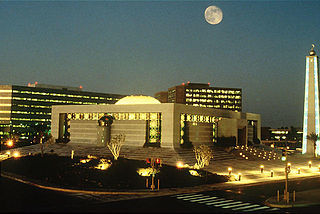
Investors hoping a Saudi Arabian Oil Co. IPO will provide a chance to buy a stake in the world’s largest crude producer may have to wait. The company says one option is to sell shares in the company’s refining assets rather than the parent company.
While that would lock private capital out of the world’s biggest oil fields, it stills offers an immense global business with plants spread from Louisiana to Japan, processing more than 3.1 million barrels a day.
“The Saudis aren’t just pumping crude out of the ground and selling it anymore,” said Jim Krane, energy research fellow at the Baker Institute at Rice University in Houston. “They’re now converting a massive share of that crude into all sorts of refined products. Things like high-quality gasoline and low- sulfur diesel, and petrochemicals.”
Saudi Aramco, as the state-owned oil monopoly is known, confirmed on Friday it was studying options for a share sale. While one route is a full initial public offering, another is “listing of a bundle” of refining subsidiaries, it said in a statement.
That suggests Aramco may seek a path to IPO that allows the state to retain full control of its crown jewels: the fields that produce more than 10 million barrels a day and make it the world’s largest exporter.
“Given the size of the company, selling its downstream business is the most likely scenario at first, as the offering will require a huge amount of liquidity,” said Fahad al-Turki, chief economist at Riyadh-based Jadwa Investment Co.
The kingdom owns, either directly or through joint- ventures, plants capable of processing 5.3 million barrels a day in Saudi Arabia, the U.S., South Korea, Japan and China. Of that, Aramco directly controls 3.1 million barrels a day.
Based on its direct ownership, the Saudi company is the world’s fourth-largest refiner, behind Exxon Mobil Corp., Royal Dutch Shell Plc and China Petroleum & Chemical Corp., or Sinopec, according to U.S.-based consultants PetroStrategies Inc.
Selling Shares
Aramco could be at the top of the ranking by 2025, if the plans of its new Chief Executive Officer Amin Nasser to almost double capacity to 10 million barrels a day are realized. By then, Aramco would be able to produce enough refined products to supply nearly all the gasoline, diesel and other fuels China consumes.
“Selling shares of its downstream business will allow Aramco to raise enough cash to expand its refining portfolio at home and abroad,” according to Mohamed Ramady, a London-based independent analyst and former economics professor at King Fahad University for Petroleum and Minerals. “The company wants to double its refining capacity and that will require a lot of cash, and at low oil prices getting that cash from its own pockets will pressure its budget.”
Whatever the size, refining isn’t nearly as valuable as oil production. And investors, whether local or foreign, could hesitate. Consider Valero Energy Corp, the largest U.S. domestic refiner. Despite its 2.9 million barrels of processing capacity — the sixth-largest globally — it has a market capitalization of just under $35 billion. Compare that with Exxon’s $313 billion.
John Sfakianakis, a Riyadh-based economist and former government adviser, said Aramco could sell stakes of between 30 and 49 percent in its downstream projects. He estimated the value of Aramco’s downstream projects at home and abroad at between $100 billion to $150 billion.
Refining IPO
The discussion about a refining IPO comes as Saudi Arabia is spending billions of dollars to invest in refineries in Asia, with contracts guaranteeing that most of the oil will come from the kingdom. Riyadh has already invested in plants in China and South Korea and has announced plans to take a stake in its first refinery in Indonesia.
Aramco Chairman Khalid Al-Falih said in Beijing in March the company “would like to multiply our investments in China.”
Aramco has struggled to expand beyond its first plant in Asia’s largest economy. Since 2011, Aramco has been talking to China National Petroleum Corp. about a facility with a capacity of 260,000 barrels a day in Yunnan province, a mountainous region bordering Vietnam and Laos. Though the two sides agreed in 2011 that the Saudis would control 40 percent of the venture, there’s been little visible progress.
Motiva Enterprises
The Saudis pursued a similar path in the U.S. three decades ago to lock in sales as crude prices tumbled, buying into three oil-processing facilities in Texas and Louisiana since 1988. The strategy worked: Motiva Enterprises LLC, the U.S. refiner half- owned by Aramco, last year imported a significant proportion of its oil from the kingdom.
The Saudi company has experience with refining listings. In 2008, it sold shares in a venture called Rabigh Refining and Petrochemical Co. Aramco retained a 37.5 percent stake, Sumitomo Chemical Co. Ltd. bought 37.5 percent and the rest was sold into the local stock market.
The flotation of Rabigh, which processes 400,000 barrels a day, was seen as a way to transfer oil wealth to the 4.5 million Saudi citizens who invested in the venture. Still, the share price has fallen 51 percent after oil prices plunged.
Aramco has in the past talked about floating stakes in other domestic joint-ventures in refining and petrochemicals, including in the so-called Satorp and Yasref refining projects, each with a capacity for 400,000 barrels a day, and in the Sadara chemical venture.